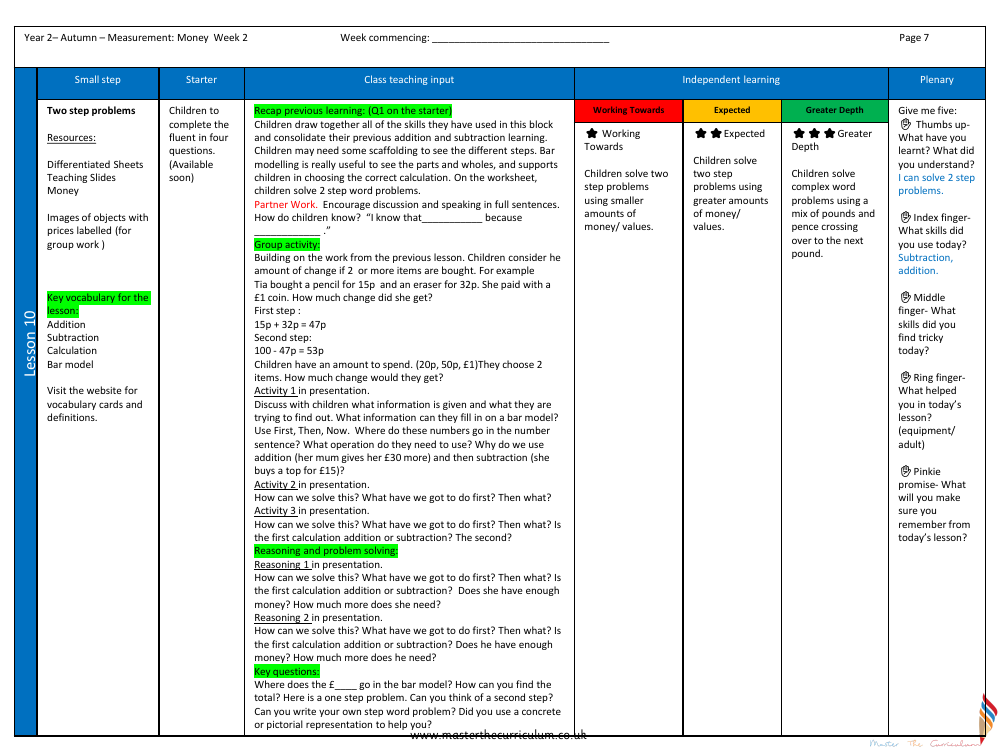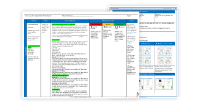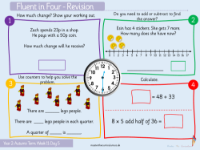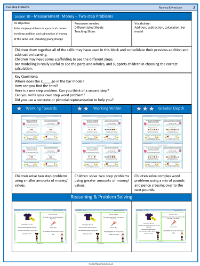Money - Two-step problems - Planning

Maths Resource Description
In the second week of Autumn term for Year 2, students delve into the realm of monetary calculations with a focus on two-step problems. The lesson utilises differentiated sheets and teaching slides to facilitate learning, and it incorporates engaging activities such as working with images of objects with price tags for group exercises. The key vocabulary for this lesson includes terms like 'addition', 'subtraction', 'calculation', and 'bar model', with resources available for vocabulary cards and definitions to support understanding. Students begin by revisiting previous learning, combining their knowledge of addition and subtraction to tackle two-step word problems. Bar modelling serves as an essential tool, helping students visualise the parts and wholes of a problem, thus aiding in the selection of the correct mathematical operations.
During the lesson, students engage in partner work and group activities to discuss and solve problems involving monetary transactions, such as calculating change when multiple items are purchased. For instance, they might work out the change from a £1 coin when buying items costing 15p and 32p. The lesson progresses through various activities where students identify given information, determine what they need to find, and decide on the appropriate operations to use, whether it's addition or subtraction. The plenary includes a 'Give me five' reflection where students consider what they've learned, the skills they've utilised, and any challenges they faced. Differentiated outcomes cater to varying levels of proficiency, ranging from solving simple two-step problems with smaller amounts to tackling complex word problems involving both pounds and pence, crossing thresholds into the next pound.


